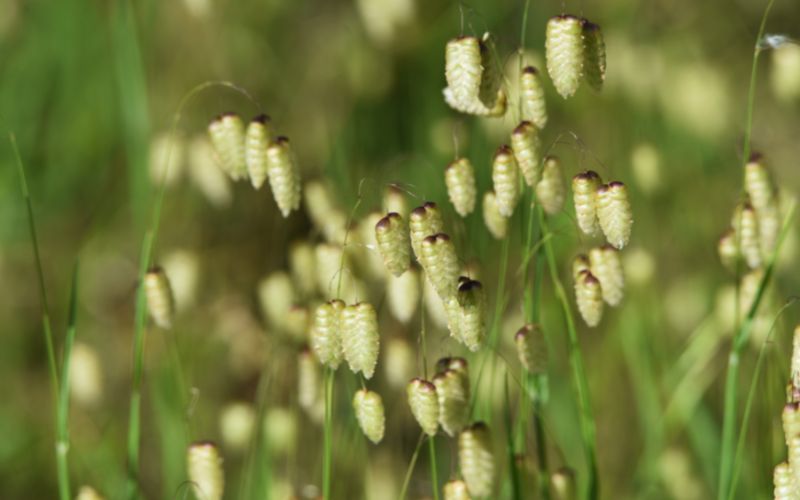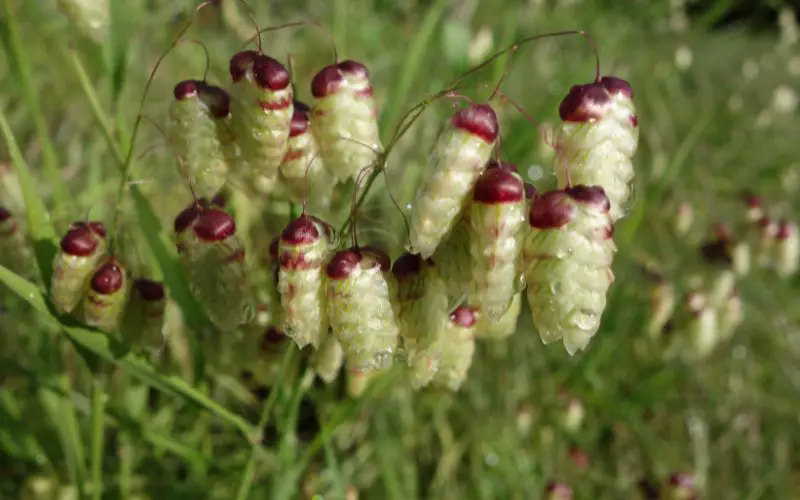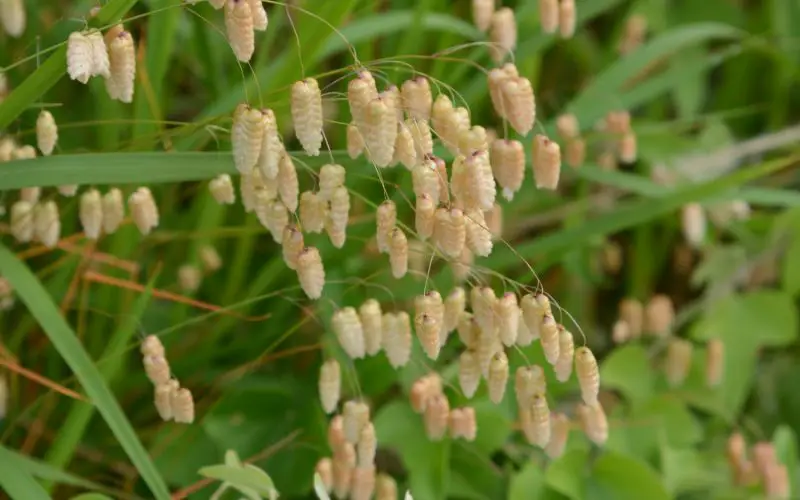If you’re looking to add a little bit of movement and interest to your garden, then growing quaking grass from seed is a great option. This guide will show you how.
Quaking grass (Briza maxima) is a beautiful ornamental grass that gets its name from the way its leaves tremble in the breeze.
It’s a low-growing plant, only reaching around 30cm in height, which makes it perfect for adding texture and interest to rockeries, edges and borders.
Quaking grass is easy to grow from seed. The first thing you need to do is make sure you have a well-drained seed bed. If your soil is heavy or clay-based, then consider raising your seed bed by adding some grit or sand to improve drainage. Sow your quaking grass seeds in late spring or early summer, around May or June.

How to grow quaking grass from seed
To get the best results, soak your quaking grass seeds in water for 24 hours before sowing. This will help to soften the seed coat and encourage germination.
Quaking grass seeds can be sown directly onto the spoil surface or can be sown in trays of good quality potting compost and then transplanted when they are large enough.
Sow your seeds on the surface of the soil or compost and then lightly cover with a fine layer of grit or sand.
Water well and keep moist until germination, which usually takes around 21 days.
Once your quaking grass seedlings have emerged, thin out to leave around 10-15cm between each plant.
Water regularly during dry spells and cut back the plants in late autumn to tidy them up ready for winter.
Where does quaking grass grow best?
Quaking grass is a tough little plant and will grow in most soil types as long as it is well-drained.
It’s also relatively drought-tolerant once established, so it’s a great plant for growing in dry areas of the garden.
Full sun or partial shade are both fine for quaking grass, although it will produce the best foliage color in full sun.
Where can you get quaking grass seeds from?
You can buy quaking grass seeds from most garden centers or online retailers.
There are several varieties available so have a look around and see which one takes your fancy.
[amazon box=”B004ZI044K” template=”horizontal”]
Is quaking grass a perennial or an annual?
Quaking grass is a perennial plant, which means it will come back year after year.
It’s a relatively short-lived plant though and may only last for 3-5 years before it needs to be replaced.
Is quaking grass invasive?
Quaking grass is not classed as an invasive plant.
However, it can self-seed quite readily so it’s best to deadhead the flowers before they have a chance to set seed if you don’t want it spreading around your garden.
Do you need to feed Briza grass?
No, quaking grass is a relatively low-maintenance plant and doesn’t need to be fed.
A light annual dressing of compost in late winter or early spring is all it will need to keep it looking its best.

What pests and diseases affect quaking grass?
Quaking grass is a relatively tough plant and isn’t affected by many pests or diseases. The main problem you may encounter is rust, which can cause the leaves to turn yellow and eventually brown.
If you do notice any problems with your plants, remove affected leaves and dispose of them carefully to prevent the disease spreading.
Final words
Quaking grass is a beautiful ornamental grass that is perfect for adding texture and interest to rockeries, edges and borders.
It’s easy to grow from seed and is relatively low-maintenance.
Why not give it a try in your garden this year?




